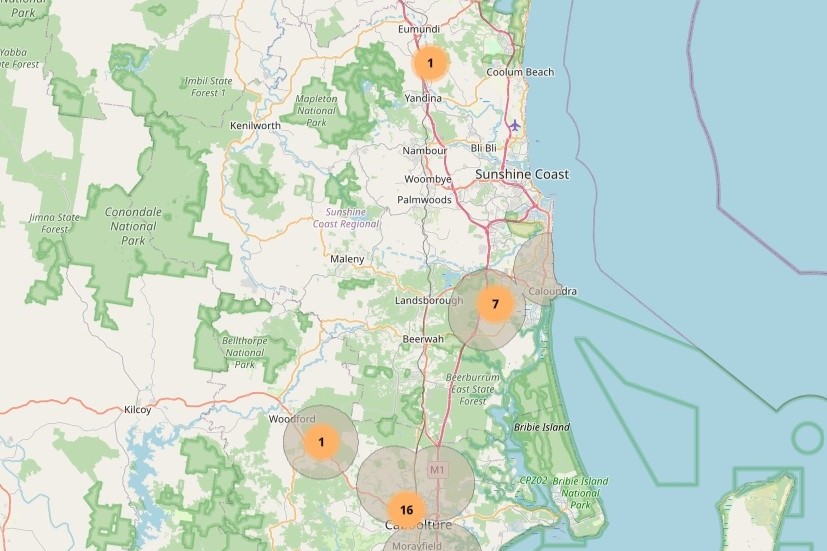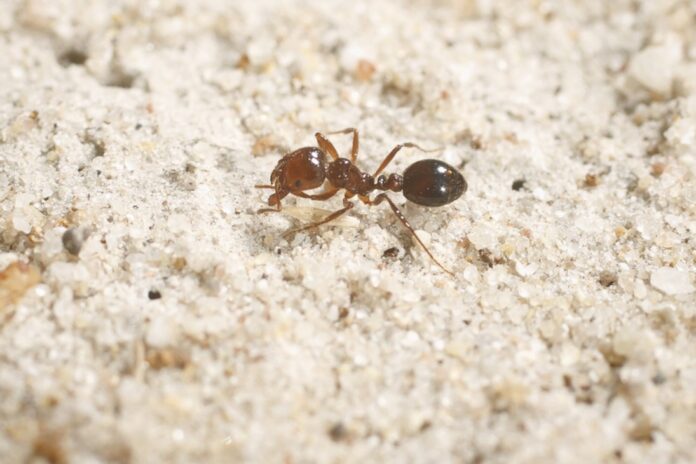More fire ant nests have been found on the Sunshine Coast, about 35km north of previous recorded sightings.
The National Fire Ant Eradication Program issued a media release confirming that multiple nests were discovered at North Arm, near Yandina.
A community member initially reported a suspect fire ant nest.
An NFAEP team visited the site on January 17 and destroyed six nests using direct nest injection. The ants were confirmed by scientists to be fire ants that afternoon.
Nests were last year detected at Nirimba and Banya, Currimundi and Nirimba, and the threat appeared to have eased before the discovery of nests at North Arm, which is the most northern sighting.
An NFAEP spokesperson said that eradication officers would continue to work in the area.

“We will be conducting further treatment and surveillance activities to ensure there are no more nests in the area.”
“Fire ant detections outside the South-East Queensland infestation area do happen from time to time, and our program has procedures in place to deal with them.”
The spokesperson urged people in the region to report any suspect nests.
“Eradicating fire ants requires a whole-of-community approach.”
Do you have an opinion to share? Submit a Letter to the Editor at Sunshine Coast News via news@sunshinecoastnews.com.au. You must include your name and suburb.
“We need everyone to look for and report fire ants (and) let our teams in if we need to conduct eradication activities and take steps not to spread the invasive pest.”
It’s unknown how fire ants reached North Arm.
“Compliance and tracing of fire ant carrier movements in the North Arm area will occur to help determine the source of the ants,” the spokesperson said.
The finding prompted the Invasive Species Council to issue an urgent call to boost funding in the fire ant suppression zone.
Invasive Species Council advocacy manager Reece Pianta said the discovery was “a chilling reminder of how effortlessly these tiny killers can invade new areas”.
“if fire ants continue to breach containment it will ruin any chance we have of eradicating them.
“Fire ants are one of the world’s worst super pests and their unchecked spread will result in economic damage greater than that caused by cane toads, rabbits, feral cats and foxes combined.
“We are urgently calling for the Queensland government to act and ramp up fire ant suppression to reduce the risk of repeated fire ant spread events.
“We also call on Peter Dutton and Anthony Albanese to commit to an urgent fire ant surge and long-term funding.”
Fire ants are copper brown in colour and have a darker abdomen. They measure 2mm to 6 mm in length with a variety of sizes found in each nest. Fire ant nests appear as mounds or patches of loose soil and have no obvious entry or exit holes.
Fire ants are attracted to disturbed soil and can be transported through the human-assisted movement of organic materials. This is the biggest risk to their spread.
Visit fireants.org.au or call 132 ANT (13 22 68) to learn more about fire ants and what steps you should take to stop them in their tracks.





